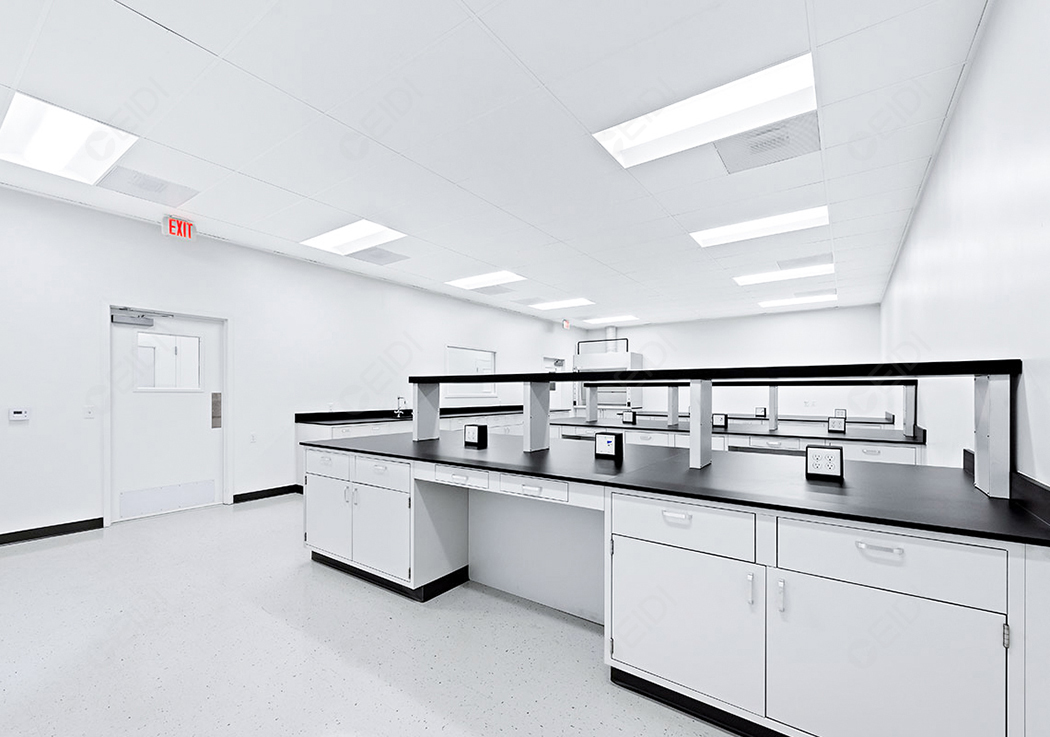Welcome to the official website of Xidi laboratory, the laboratory design and decoration recognize Xidi!
|
|
Home >> News >> Technology
文章出处:Technology|阅读量:837|发表时间:2020-07-27
The last article introduced the graphic design and single-unit structural function design in the planning and layout of the environmental testing laboratory. For details, please click "Planning and Layout of the Environmental Testing Laboratory (1)" to view. The remaining content is introduced below, including: water supply and drainage design, electric control system design, gas distribution system design, and gas exhaust system design.
I. Water supply and drainage design
Water supply and drainage is also called "water supply and drainage". According to the different nature of water supply and drainage, the water supply and drainage of environmental testing laboratories can be divided into two categories, namely: experimental water supply and drainage, daily water supply and drainage, and their drainage pipes are also independent.
First, let's look at the laboratory's water supply and drainage. The water supply is equipped with rapid water nozzles and slow-flow water nozzles. The single-connected water nozzle is the rapid-flow water nozzle and the double-connected water nozzle is the slow-flow water nozzle. Drainage is the waste water discharged into the wastewater treatment station, and then discharged into the urban pipe after treatment. network. Second, look at the daily water supply and drainage. The taps for water supply refer to civil buildings; for drainage, waste water is directly discharged into the urban domestic sewage pipe network.
II. Design of electronic control system
The electric control system is one of the most basic systems in the laboratory. For the environmental testing laboratory, its electricity consumption is divided into two parts, namely: lighting electricity and power electricity. Among them, the former is used for the lighting in the laboratory, and the latter is used for the power supply of various instruments and equipment, elevators, air conditioners, etc.
The power supply in the laboratory must be both AC and DC, and the sockets must also be single-phase and three-phase, equipped with leakage protection switches, overload protection switches, and voltage regulation requirements. If there is a laboratory for instrument analysis, there must be anti-electromagnetic interference, grounding and electromagnetic shielding.
III, gas distribution system design
The gas used in environmental testing laboratories is mainly divided into 4 categories, namely: non-combustible gas (nitrogen and carbon dioxide), inert gas (argon and helium, etc.), flammable gas (hydrogen and carbon monoxide), and combustion-supporting gas (oxygen).
The above gas enters the laboratory through the gas pipe, so the pipeline must be sealed. In addition, ensure that the distance between the pipelines is not less than 45mm, and the flammable gas and inert gas must be in the same cabinet when the gas cylinder is bottled.
IV, gas exhaust system design
The experimental projects of environmental testing laboratories generate harmful gases, so exhaust air is very important. The design of the gas exhaust system must be safe and energy-saving. Specifically, the exhaust equipment includes: fume hood, atomic absorption hood, universal exhaust hood, ceiling exhaust hood, countertop exhaust hood, etc.
I believe that through the introduction of these two articles, everyone has a preliminary understanding of the layout of the environmental testing laboratory.